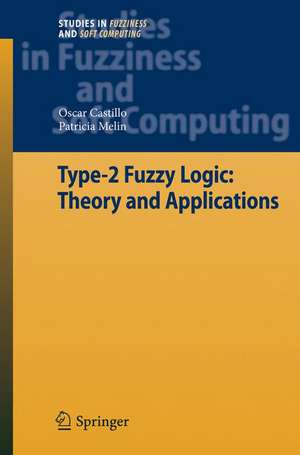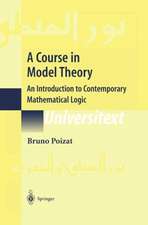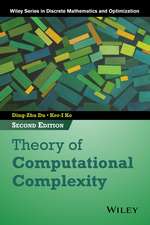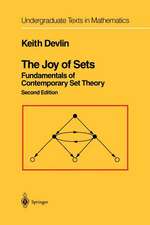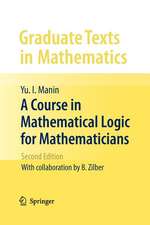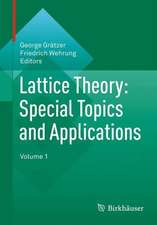Type-2 Fuzzy Logic: Theory and Applications: Studies in Fuzziness and Soft Computing, cartea 223
Autor Oscar Castillo, Patricia Melinen Limba Engleză Hardback – 20 feb 2008
| Toate formatele și edițiile | Preț | Express |
|---|---|---|
| Paperback (1) | 638.57 lei 6-8 săpt. | |
| Springer Berlin, Heidelberg – 21 oct 2010 | 638.57 lei 6-8 săpt. | |
| Hardback (1) | 644.82 lei 6-8 săpt. | |
| Springer Berlin, Heidelberg – 20 feb 2008 | 644.82 lei 6-8 săpt. |
Din seria Studies in Fuzziness and Soft Computing
- 20%
 Preț: 999.85 lei
Preț: 999.85 lei - 20%
 Preț: 653.06 lei
Preț: 653.06 lei - 20%
 Preț: 872.98 lei
Preț: 872.98 lei - 20%
 Preț: 930.57 lei
Preț: 930.57 lei - 20%
 Preț: 1051.00 lei
Preț: 1051.00 lei - 20%
 Preț: 992.44 lei
Preț: 992.44 lei - 20%
 Preț: 655.85 lei
Preț: 655.85 lei - 20%
 Preț: 1001.86 lei
Preț: 1001.86 lei - 18%
 Preț: 954.14 lei
Preț: 954.14 lei - 20%
 Preț: 330.10 lei
Preț: 330.10 lei - 20%
 Preț: 333.04 lei
Preț: 333.04 lei - 20%
 Preț: 997.56 lei
Preț: 997.56 lei -
 Preț: 391.61 lei
Preț: 391.61 lei - 20%
 Preț: 647.79 lei
Preț: 647.79 lei - 20%
 Preț: 986.01 lei
Preț: 986.01 lei - 18%
 Preț: 958.56 lei
Preț: 958.56 lei - 20%
 Preț: 996.40 lei
Preț: 996.40 lei - 20%
 Preț: 999.35 lei
Preț: 999.35 lei - 15%
 Preț: 646.43 lei
Preț: 646.43 lei - 20%
 Preț: 651.57 lei
Preț: 651.57 lei - 20%
 Preț: 997.89 lei
Preț: 997.89 lei - 15%
 Preț: 641.03 lei
Preț: 641.03 lei - 20%
 Preț: 1009.74 lei
Preț: 1009.74 lei - 20%
 Preț: 992.62 lei
Preț: 992.62 lei -
 Preț: 388.72 lei
Preț: 388.72 lei - 18%
 Preț: 1223.43 lei
Preț: 1223.43 lei - 20%
 Preț: 651.42 lei
Preț: 651.42 lei - 18%
 Preț: 951.59 lei
Preț: 951.59 lei - 18%
 Preț: 948.61 lei
Preț: 948.61 lei
Preț: 644.82 lei
Preț vechi: 758.60 lei
-15% Nou
Puncte Express: 967
Preț estimativ în valută:
123.39€ • 131.94$ • 102.88£
123.39€ • 131.94$ • 102.88£
Carte tipărită la comandă
Livrare economică 17 aprilie-01 mai
Preluare comenzi: 021 569.72.76
Specificații
ISBN-13: 9783540762836
ISBN-10: 3540762833
Pagini: 260
Ilustrații: XIV, 244 p. 188 illus.
Dimensiuni: 155 x 235 x 19 mm
Greutate: 0.54 kg
Ediția:2008
Editura: Springer Berlin, Heidelberg
Colecția Springer
Seria Studies in Fuzziness and Soft Computing
Locul publicării:Berlin, Heidelberg, Germany
ISBN-10: 3540762833
Pagini: 260
Ilustrații: XIV, 244 p. 188 illus.
Dimensiuni: 155 x 235 x 19 mm
Greutate: 0.54 kg
Ediția:2008
Editura: Springer Berlin, Heidelberg
Colecția Springer
Seria Studies in Fuzziness and Soft Computing
Locul publicării:Berlin, Heidelberg, Germany
Public țintă
ResearchCuprins
1 Introduction to Type-2 Fuzzy Logic.- 2 Type-1 Fuzzy Logic.- 3 Type-2 Fuzzy Logic.- 4 A Method for Type-2 Fuzzy Inference in Control Applications.- 5 Design of Intelligent Systems with Interval Type-2 Fuzzy Logic.- 6 Method for Response Integration in Modular Neural Networks with Type-2 Fuzzy Logic.- 7 Type-2 Fuzzy Logic for Improving Training Data and Response Integration in Modular Neural Networks for Image Recognition.- 8 Fuzzy Inference Systems Type-1 and Type-2 for Digital Images Edge Detection.- 9 Systematic Design of a Stable Type-2 Fuzzy Logic Controller.- 10 Experimental Study of Intelligent Controllers Under Uncertainty Using Type-1 and Type-2 Fuzzy Logic.- 11 Evolutionary Optimization of Interval Type-2 Membership Functions Using the Human Evolutionary Model.- 12 Design of Fuzzy Inference Systems with the Interval Type-2 Fuzzy Logic Toolbox.- 13 Intelligent Control of the Pendubot with Interval Type-2 Fuzzy Logic.- 14 Automated Quality Control in Sound Speakers Manufacturing Using a Hybrid Neuro-fuzzy-Fractal Approach.- 15 A New Approach for Plant Monitoring Using Type-2 Fuzzy Logic and Fractal Theory.- 16 Intelligent Control of Autonomous Robotic Systems Using Interval Type-2 Fuzzy Logic and Genetic Algorithms.- 17 Adaptive Noise Cancellation Using Type-2 Fuzzy Logic and Neural Networks.
Recenzii
From the reviews:
“This research monograph offers a broad coverage of the recent developments in … type-2 fuzzy sets and fuzzy systems. … The monograph is arranged into 17 concise and well-focused chapters covering a wealth of applications and methodologies of type-2 fuzzy sets. … chapters brings some useful motivating notes and elaborates on the algorithms pertinent to the problem at hand. … a timely compendium of applications of type-2 fuzzy systems and offers the reader a sound overview of design techniques supporting the construction of such architectures.” (Witold Pedrycz, Zentralblatt MATH, Vol. 1171, 2009)
“This research monograph offers a broad coverage of the recent developments in … type-2 fuzzy sets and fuzzy systems. … The monograph is arranged into 17 concise and well-focused chapters covering a wealth of applications and methodologies of type-2 fuzzy sets. … chapters brings some useful motivating notes and elaborates on the algorithms pertinent to the problem at hand. … a timely compendium of applications of type-2 fuzzy systems and offers the reader a sound overview of design techniques supporting the construction of such architectures.” (Witold Pedrycz, Zentralblatt MATH, Vol. 1171, 2009)
Textul de pe ultima copertă
This book describes new methods for building intelligent systems using type-2 fuzzy logic and soft computing techniques. Soft Computing (SC) consists of several computing paradigms, including type-1 fuzzy logic, neural networks, and genetic algorithms, which can be used to create powerful hybrid intelligent systems. The authors extends the use of fuzzy logic to a higher order, which is called type-2 fuzzy logic. Combining type-2 fuzzy logic with traditional SC techniques, we can build powerful hybrid intelligent systems that can use the advantages that each technique offers. We consider in this book the use of type-2 fuzzy logic and traditional SC techniques to solve pattern recognition problems in realworld applications.
This book is intended to be a major reference for scientists and engineers interested in applying type-2 fuzzy logic for solving problems in pattern recognition, intelligent control, intelligent manufacturing, robotics and automation. This book can also be used as a textbook or major reference for graduate courses like the following: soft computing, intelligent pattern recognition, computer vision, applied artificial intelligence, and similar ones.
This book is intended to be a major reference for scientists and engineers interested in applying type-2 fuzzy logic for solving problems in pattern recognition, intelligent control, intelligent manufacturing, robotics and automation. This book can also be used as a textbook or major reference for graduate courses like the following: soft computing, intelligent pattern recognition, computer vision, applied artificial intelligence, and similar ones.
Caracteristici
Presents theory and applications of Type-2 Fuzzy Logic
